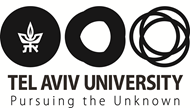Philosophy of Aesthetics
Introduction to Aesthetics
Dr. Rona Cohen
The ability to judge objects as beautiful is a universal disposition rooted in human nature, a sensus communis (common sense) for the appreciation of beauty. Following Kant’s seminal work The Critique of the Power of Judgment, the philosophical discipline of aesthetics argues that the phenomena of beauty and its enjoyment involve a particular sort of experience irreducible to any other domain of human experience, such as cognition or morality. This course introduces fundamental concepts and key questions in philosophical aesthetics, paying special attention to the “modernist break” in 20th century art, after which the pursuit of beauty, formerly perhaps the loftiest aspiration of western artists throughout history, had become an indication of conservatism, epitomized by artist Barnett Newman’s argument that “the impulse of modern art is the desire to destroy beauty”. Other topics to be addressed in the course include questioning whether art is merely an imitation of nature, a “shadow of reality”, like Plato held, and therefore merely a fictitious deception devoid of truth or is art an event of truth, like Heidegger held? How do works of art express an idea or a concept through material sensible components? Do works of art have the power to express things that words cannot? Is the category of “aesthetic” obsolete with the politicization of art in the 20th century? How does everything we know about art and aesthetics changes in the 20th century with Marcel Duchamp’s introduction of a urinal into the museum: does this act mark the “end of art” as Hegel had predicted?
Grade:
80% Take Home Exam
20% Participation in class
Week 1 Introduction
Reading: Plato, The Republic. Trans. G. R. F. Ferrari, and Tom Griffith. Cambridge: Cambridge University Press, 2000.
Week 2 On Beauty and Eros
Reading:Plato, The Symposium. Trans. Howatson, M.C. and Sheffield, F. Cambridge: Cambridge University Press, 2008.
Aristotle, The Poetics. Trans Anthony Kenny. Oxford: Oxford University Press, 2013.
Week 3 The Two Forces of Creation
Reading: Nietzsche, The Birth of Tragedy and Other Writings, R. Spiers (trans.), R Geuss and R. Speirs (eds.), Cambridge: Cambridge University Press, 1990.
Week 4, 5 The Birth of Modern Aesthetics
Reading: Kant, Immanuel. Critique of the Power of Judgment, trans Paul Guyer, Eric Matthews. Cambridge : Cambridge University Press, c2000.
Week 6 Aesthetics after the Modernist Crisis
Reading: De Duve, Thierry. Kant after Duchamp, Cambridge, Massachusetts: The MIT Press, 1996.
Week 7 “Light without Love”
Reading: “Light without Love” in Harries, Karsten, The Broken Frame: Three Lectures, Washington DC: Catholic University of America Press, 1989.
Week 8 The Politics of Aesthetics
Reading: Rancière, Jean, The Politics of Aesthetics: the Distribution of the Sensible. Trans, with an introd. by Gabriel Rockhill, London and New York: Continuum, 2004.
Week 9 Psychoanalytic Aesthetics
Reading: Sigmund Freud. "The Uncanny,” in Strachey and Anna Freud (eds), The Standard Edition of the Complete Psychological Works of Sigmund Freud, London: The Hogarth Press, 1953.
Week 10 Art and Truth
Reading: Heidegger Martin, “The Origin of the Work of Art.” Trans by A. Hofstadler, in Poetry, Language, Thought. New York, 1971.

